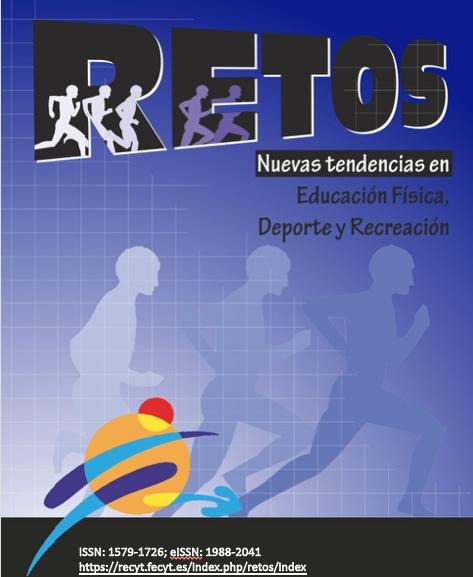Temperature distribution in biological tissues under impeded cooling during laser therapy
DOI:
https://doi.org/10.47197/retos.v71.116979Keywords:
Cooling mechanism , heat exchanger, numerical simulation, laser treatmentAbstract
Introduction: Laser treatment of biological tissue generates significant heat, which can lead to thermal damage if not properly controlled. Cooling systems play a critical role in minimizing this risk.
Objective: The objective of this study was to evaluate the temperature distribution in biological tissue during laser treatment and to analyze the effectiveness of an air-cooled heat exchanger in controlling excessive heating.
Methodology: A transient thermal analysis was carried out to simulate the combined process of laser irradiation and air-cooling. In parallel, experimental tests were conducted to validate the numerical predictions.
Results: The findings indicated that, in the absence of cooling, the tissue surface temperature exceeded 85 °C, creating a risk of thermal injury. With the integration of the air-cooled heat exchanger, the maximum surface temperature was reduced to 72.4 °C, while the temperature at a 2 mm depth was maintained at 58.2 °C. The cooling system promoted a rapid post-exposure temperature drop and limited the temperature gradient between surface and deeper layers to 8–12 °C.
Discussion: The results demonstrated consistency with existing literature on the importance of cooling techniques in medical laser applications. The cooling mechanism not only improved heat dissipation but also reduced the risk of overheating compared with previously reported systems.
Conclusions: This study confirmed that precise thermal management is essential for safe and efficient laser treatment. The integration of an air-cooled heat exchanger enhances treatment efficiency and minimizes tissue damage.
References
Jawo, E., Hassan, M., & Almazah, M. M. (2024). Bio-thermal non-equilibrium dynamics and thermal damage in biological tissues induced by multiple time pulse-laser irradiations. Case Studies in Thermal Engineering, 61, 104989.
Kabiri, A., & Talaee, M. R. (2021). Thermal field and tissue damage analysis of moving laser in cancer thermal therapy. Lasers in Medical Science, 36(3), 583-597.
Kelly, K. M., & Nelson, J. S. (2005). Skin cooling in laser dermatology. In Principles and practices in cutaneous laser surgery (Vol. 33, p. 403).
Krishnaprasad, K., Pathi, R. T., & Nazar, M. (2024). Factors affecting the thermal effects of lasers in lithotripsy: A literature review. Asian Journal of Urology.
Jódar Llinás, E., & Castellote Caballero, M. Y. C. C. (2024). Efectividad de la crioterapia en la recupera-ción musculoesquelética de los artistas marciales: Revisión sistemática (Effectiveness of cryot-herapy in the musculoskeletal recovery of martial artists: Systematic review). Retos, 54, 676-691. https://doi.org/10.47197/retos.v54.102790
Li, C. Y., Lin, S. M., & Wan, Y. Y. (2020). Prediction of Temperature Field and Thermal Damage of Multi-layer Skin Tissues Subjected to Time‐Varying Laser Heating and Fluid Cooling by a Semianalyt-ical Method. Mathematical Problems in Engineering, 2020(1), 5074280.
Mashkoor, A. (2016). The hemodialysis machine case study. In Abstract State Machines, Alloy, B, TLA, VDM, and Z: 5th International Conference, ABZ 2016, Linz, Austria, May 23-27, 2016, Proceed-ings 5 (pp. 329-343). Springer International Publishing.
Nelson, J. S., Majaron, B., & Kelly, K. M. (2000, December). Active skin cooling in conjunction with laser dermatologic surgery. In Seminars in cutaneous medicine and surgery (Vol. 19, No. 4, pp. 253-266).
Purohit, G., Kothiyal, P., & Jadoun, M. K. (2022). Laser and its medical applications. In A. Raizada & N. Srivastava (Eds.), Making Life Better (Chapter 2, pp. 17–34). Weser Books.
Paquete, M., Harry Leite, P., Bernardo, D., & Moreira, L. . (2024). Disponibilidad y uso de agentes elec-trofísicos por los fisioterapeutas portugueses: cuestionario online (Availability and Usage of Electrophysical Agents by Portuguese Physiotherapists: an online Survey). Retos, 57, 118-124. https://doi.org/10.47197/retos.v57.104009
Raulin, C., Greve, B., & Hammes, S. (2000). Cold air in laser therapy: first experiences with a new cool-ing system. Lasers in Surgery and Medicine: The Official Journal of the American Society for Laser Medicine and Surgery, 27(5), 404-410.
Ravindran, S. (2014). Medical Applications of Thermal Science. Middle-East Journal of Scientific Re-search, 20(9), 1070-1074.
Shan, L., Wang, R., Wang, Y., Chen, H., Wei, S., Dong, D., ... & Ma, T. (2022). Effects of water cooling on laser‐induced thermal damage in rat hepatectomy. Lasers in Surgery and Medicine, 54(6), 907-915.
Sun, Y. J., Zhang, Z. Y., Fan, B., & Li, G. Y. (2019). Neuroprotection by therapeutic hypothermia. Fron-tiers in neuroscience, 13, 586.
Van de Sompel, D., Kong, T. Y., & Ventikos, Y. (2009). Modelling of experimentally created partial thickness human skin burns and subsequent therapeutic cooling: A new measure for cooling ef-fectiveness. Medical Engineering & Physics, 31(6), 624–631.
Wang, X. K., Jiang, Z. Q., Tan, J., Yin, G. M., & Huang, K. (2019). Thermal effect of holmium laser litho-tripsy under ureteroscopy. Chinese Medical Journal, 132(16), 2004-2007.
Downloads
Published
Issue
Section
License
Copyright (c) 2025 Areej S. Mahdi, Ali Ben Moussa, Hussein Kadhim Sharaf

This work is licensed under a Creative Commons Attribution-NonCommercial-NoDerivatives 4.0 International License.
Authors who publish with this journal agree to the following terms:
- Authors retain copyright and ensure the magazine the right to be the first publication of the work as licensed under a Creative Commons Attribution License that allows others to share the work with an acknowledgment of authorship of the work and the initial publication in this magazine.
- Authors can establish separate additional agreements for non-exclusive distribution of the version of the work published in the journal (eg, to an institutional repository or publish it in a book), with an acknowledgment of its initial publication in this journal.
- Is allowed and authors are encouraged to disseminate their work electronically (eg, in institutional repositories or on their own website) prior to and during the submission process, as it can lead to productive exchanges, as well as to a subpoena more Early and more of published work (See The Effect of Open Access) (in English).
This journal provides immediate open access to its content (BOAI, http://legacy.earlham.edu/~peters/fos/boaifaq.htm#openaccess) on the principle that making research freely available to the public supports a greater global exchange of knowledge. The authors may download the papers from the journal website, or will be provided with the PDF version of the article via e-mail.


